|

September 24, 2023
By Oraan Marc
Hydrogen Internal Combustion Engines
Seem To Be Regaining Momentum
Some agree that batteries are the clear
winner in the race against hydrogen technologies, while others think
the opposite. There's no such debate among internal combustion engine
proponents. Almost all of them believe that replacing
fossil-fuel-based fuels with H2 is feasible. However, there are some
significant caveats to H2ICEs.
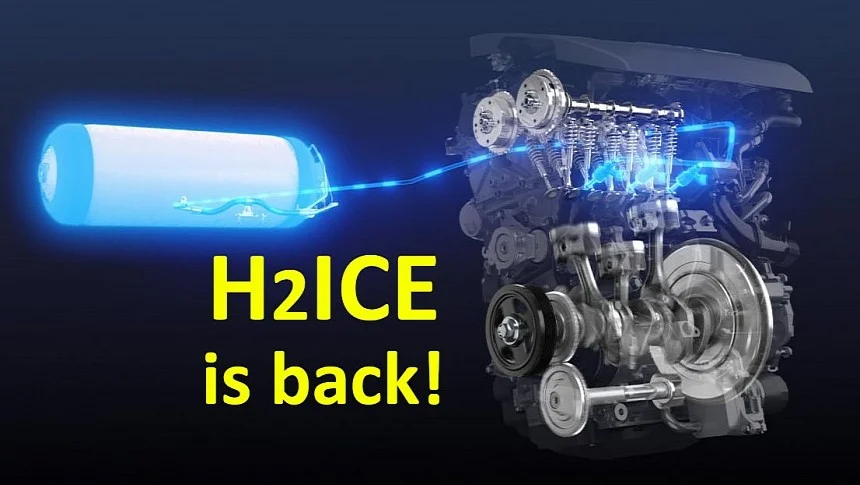
The Latin phrase "Inter duos combatentes, tertius
vincit" translates to "between two combatants, the third wins." I
always feared the fierce debate between battery-electric propulsion
enthusiasts and hydrogen-powered systems supporters would benefit the
internal combustion engine devotees.
And I was not wrong, as recently, e-fuels seduced many to believe that
phasing out of an almost obsolete technology is not necessary anymore.
Moreover, these people believe that internal combustion engines
deserve not only a top spot in history but also a bright future, along
with new high-tech-green technologies.
That's because many in the transport industry and policymakers believe
more and more in the potential of combining hydrogen and ICEs.
The fuel-cell sand castle
Currently, Toyota is the most stubborn carmaker willing to keep on
investing big money in hydrogen technology for passenger cars. Besides
small evolutions in fuel-cell technology – which are marketed as giant
leaps, but analysts agree it's not the case – the Japanese also make
efforts to use hydrogen for internal combustion engines.
BMW and Hyundai are still in the game, but the new iX5 Hydrogen
demonstration vehicles failed to impress, while Hyundai Nexo's future
is uncertain. Honda took everyone by surprise when the main rival of
Toyota in the fuel cell realm announced it put the hydrogen program on
hold to prioritize hybrids and EVs.
As for Volkswagen, their conclusion is sharp: "In the case of the
passenger car, everything speaks in favor of the battery, and
practically nothing speaks in favor of hydrogen." Mercedes-Benz also
joined the "ditch the fuel-cell" bandwagon after 30 years of pursuing
the H2 dream.
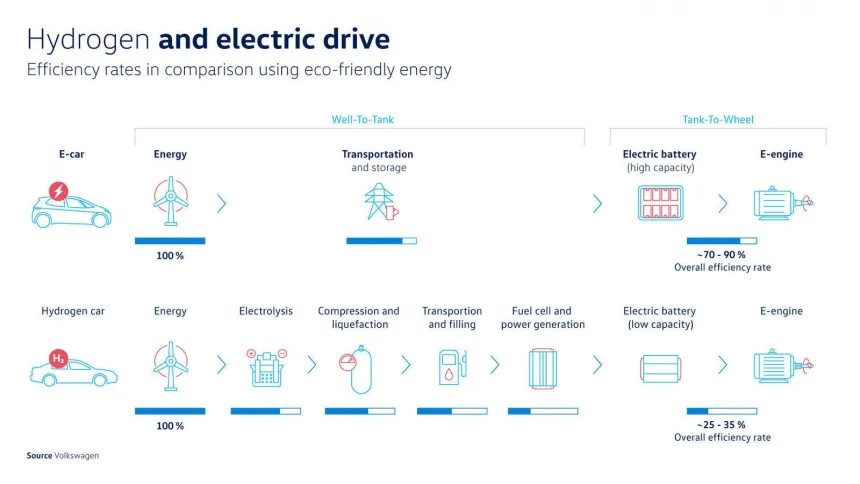
But you'd be wrong to think EV fanboys were right
and batteries prevailed. For now, this is the case regarding passenger
cars and light-duty vehicles: electric propulsion is more feasible
thanks to fast improvements in the battery sector, while hydrogen fuel
cell propulsion is still far from an economically viable option.
But road transportation is not all about the more than 1.3 billion
cars worldwide. There is also heavy road transport consisting of
millions of big trucks and lorries, buses and coaches, and all sorts
of other heavy vehicles used in agriculture, construction, mining, and
so on.
What do these heavy road vehicles all have in common? Big diesel
engines. At least one-quarter of the transportation pollution and
emissions are attributable to them. If only there would be a solution
to convert them almost overnight into close-to-zero-polluting
vehicles…
The caveats of using H2 in an ICE
The fuel cell is a "magical" device that combines hydrogen stored in
tanks aboard the vehicle and oxygen in the air, resulting in
electricity and water vapor. The electricity is used to power one or
several electric motors, and that's your zero-emissions vehicle.
However, fuel cells must be fed with pure hydrogen, which is very
expensive. It will most likely remain a costly fuel despite the
expected drop in costs when economy of scale will apply. Fuel cell
systems are also costly and require more complex manufacturing
processes and expensive raw materials like batteries.
In other words, fuel cells for heavy-duty applications still require a
lot of research and investments to become feasible. At this point,
batteries have a clear edge but also many downsides for being a
compelling alternative to diesel engines in heavy vehicles.
Is there a third option to decarbonize heavy road transport? Yes, in
theory. We could replace diesel fuel with hydrogen. It's not a new
idea, as the first internal combustion engine fueled by a mixture of
hydrogen and oxygen was invented more than 200 years ago. But let's
get back to our times.
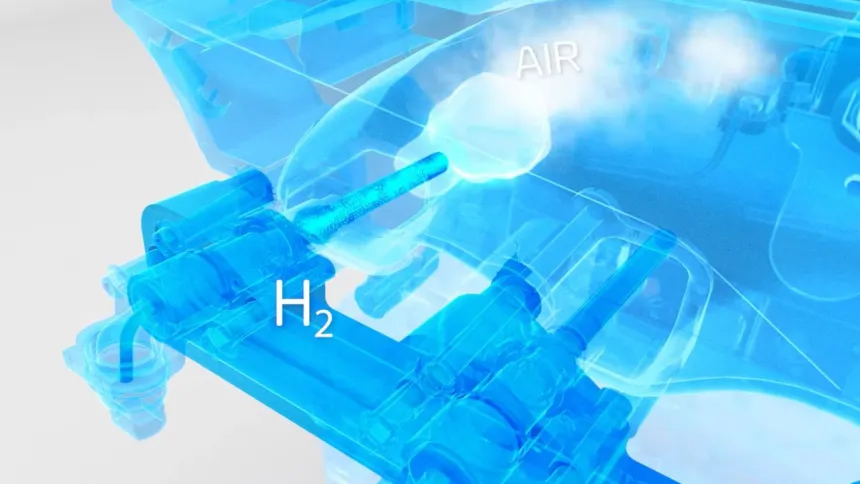
While H2 has over 2.5 times more specific energy
than fossil-fuel-based fuels, it also requires four times more volume
to store as liquid and up to 19 times more as gas. Using H2 in a
heavy-duty engine would lead to an achievable efficiency of 20-25%,
almost half that using diesel fuel.
Then, there's the problem of the hydrogen-air mixture ratio in the
combustion chamber, as hydrogen ignites much easier than gasoline or
diesel fuel. Also, twice as much air must be supplied to the cylinder
to keep NOx emissions lower, while the combustion process temperature
must not be too high.
All of these require a specific design for the direct injection system
and the combustion system, as well as exhaust treatment solutions.
Remember that an ICE needs lubricants, which also burn in small
amounts in the cylinder.
In the end, burning H2 in an ICE doesn't make the vehicle a
zero-emissions one, but it supposedly can slash emissions by a large
margin. You could say it's the same "near to 90%" reduction the
e-fuels promise.
The investment-benefits ratio is more and more interesting
In the last decades, hydrogen was mainly used as a mixture additive
for traditional fossil fuels. CO2 emissions were somewhat reduced,
justifying the cost increase for technical modifications. But now, the
need to slash emissions is much more stringent.
In light of recent evolutions, the European Commission decided to
modify the CO2 emissions standards for heavy-duty vehicles this year.
Even though H2ICE is not zero-emission, heavy-duty vehicles using this
engine type will be considered zero-emissions.
On one condition: the hydrogen used by H2ICE heavy-duty vehicles must
be genuinely a carbon-free fuel. It means it can't be sourced from
fossil fuels. As a reminder, more than 95% of the hydrogen used today
in the industry comes from natural gas, so it's carbon-intensive
"black hydrogen."
Of course, there's nothing more but a huge coincidence that the EU
accepted to allow European carmakers to manufacture ICE cars beyond
2035 if e-fuels fuel them. But let's stay optimistic about H2ICE,
shall we?
Following the EU-funded H2Engine project, between 2020 and 2022, the
German company KEYOU developed a solution to convert conventional
diesel engines into much cleaner hydrogen. Earlier this year, such a
converted engine was used by Mercedes-Benz Special Trucks in a Unimog
prototype.
In September, KEYOU started the first deliveries of their 18-tonne
truck equipped with a hydrogen engine, based on the Mercedes Benz
Actros. The six-cylinder converted diesel engine has a fuel
consumption of 7.5 kg H2 / 100 km, and the fuel is supplied via port
fuel injection, designed specifically for using hydrogen.
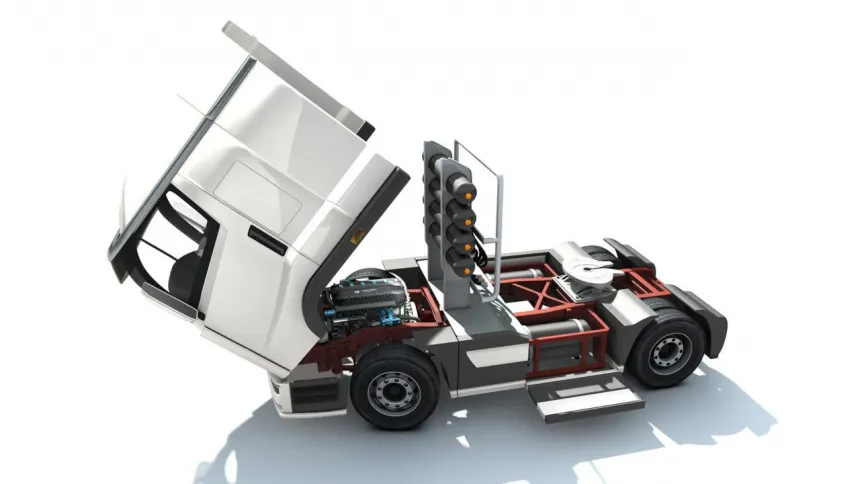
KEYOU
claims that efficient lean-burn combustion keeps the NOx levels well
below limits, and the converted engine meets Euro VI standards and the
new EU's CO2 requirements. As a result, the truck is exempt from truck
tolls, saving fleet operators "up to €15,000 in tolls per year."
American corporation Cummins is
also providing heavy-duty vehicles with hydrogen internal combustion
engines. Their latest product is the X15H hydrogen engine designed to
fit heavy-duty trucks up to 44 tonnes, providing an impressive peak
torque of 2,600 Nm.
New paradigm: H2ICE vs. fuel
cell?
Because passenger cars (and
especially SUVs) gather public attention, it's only normal that ICE
vs. batteries or batteries vs. fuel cell subjects spark so many fierce
debates. In the meantime, the real problem we face is achieving
transport decarbonization faster.
Using hydrogen as a fuel in big
engines for heavy-duty vehicles suddenly became a top priority. It
requires far less money than replacing those vehicles with electric
ones or powered by fuel cells. Converting their diesel engines into
hydrogen-fueled ones takes much less time than developing similar
vehicles using cutting-edge green technologies.
H2ICE really seems like the
best solution for the short and medium term to slash emissions in
heavy-duty road transport. Of course, we should also avoid sourcing
hydrogen from fossil fuels. Still, I believe the industry will require
that compromise – hopefully for a short time until green hydrogen
infrastructure is more developed.
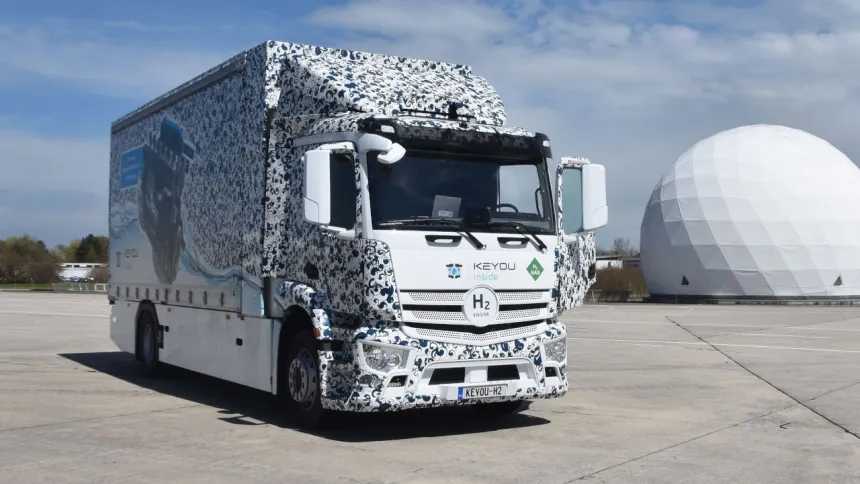
I only
wish we understood that H2ICE must be perceived only as a transitory
solution. Just as e-fuels ICEs should be perceived. H2ICE must pave
the way for fuel cells, not become an alternative in the long run.
The internal combustion
engine's time is up. It had a tremendous role in our technological
evolution, just like fossil fuels did. But it's time to acknowledge
that ICE is obsolete technology, just like burning fossil fuels hugely
damages our environment.
Green Play Ammonia™, Yielder® NFuel Energy.
Spokane, Washington. 99212
509 995 1879
Cell, Pacific Time Zone.
General office:
509-254
6854
4501 East Trent
Ave.
Spokane, WA 99212
|